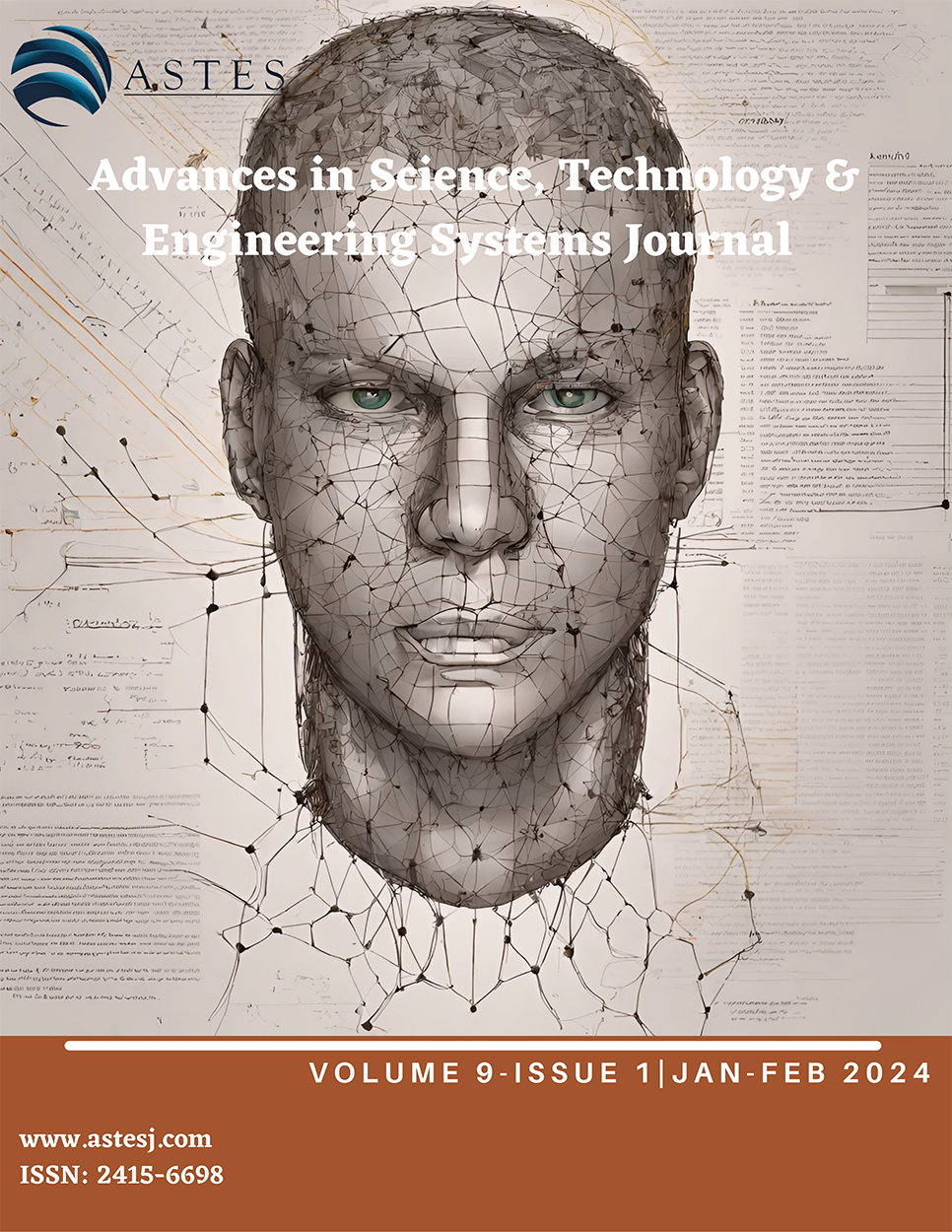Download Complete Issue
This issue features 16 research papers contributing novel approaches across diverse domains: smart farming system for sustainable agriculture in Senegal, wearable technology for analyzing sleep patterns, machine learning resume screening, enhanced IoT security framework, emotion analysis framework for facial expressions, pervious concrete for urban drainage in South Africa, hybrid deep learning model for network anomaly detection, historical perspective on machine translation evolution for low-resource languages, augmented reality for railroad maintenance training, culturally-tailored mobile app for Native American diabetes management, smart agent architecture for direct load control, Diffuse Kalman Filter for autonomous vehicle state estimation, stability assessment of explainable AI algorithms, evaluation of Macaca fascicularis heart rate data for privacy methodologies, automated GSM signal strength and meteorological measurement device, and mathematical model for five-phase permanent magnet generator in wind turbines.
Editorial
Front Cover
Adv. Sci. Technol. Eng. Syst. J. 10(3), (2025);
Editorial Board
Adv. Sci. Technol. Eng. Syst. J. 10(3), (2025);
Editorial
Adv. Sci. Technol. Eng. Syst. J. 10(3), (2025);
Table of Contents
Adv. Sci. Technol. Eng. Syst. J. 10(3), (2025);
Articles
Utilization of Generative Artificial Intelligence to Improve Students’ Visual Literacy Skills
Andi Kristanto , Utari Dewi, Dina Fitria Murad, Yumiati, Santi Dewiki, Tiara Sevi Nurmanita
Adv. Sci. Technol. Eng. Syst. J. 10(3), 1-8 (2025);
View Description
This study aims to examine the impact of Gen AI utilization on students’ visual literacy skills using a quantitative approach and data instruments in the form of post-test scores of the control class and experimental class which are analyzed to measure the effectiveness of GEN AI in improving students’ visual literacy skills at four universities. Data processing is carried out through three stages of testing, namely the normality test using Shapiro-Wilk, the homogeneity test of variance with Levene, and the independent sample test to compare the results between two groups of students with questionnaire instruments, observation guidelines, and interviews. The data is processed using a t-test to determine the average difference between groups, especially between the control class that applies conventional learning methods and the experimental class that utilizes GEN AI. The results of the needs analysis show that around 65% of students still have low visual literacy skills based on the quality of graphic media products produced by students. These findings indicate an urgent need to improve visual literacy skills among students, especially in the context of utilizing modern technology such as GEN AI. This research makes a significant contribution to the development of a curriculum that is more responsive to the needs of visual literacy in the digital era, as well as encouraging the integration of technology in the learning process and is expected to be a reference for the development of more innovative and effective learning strategies to improve students’ visual literacy skills in higher education.
Characteristics of crystal defects due to the inverse piezoelectric effect in aluminum gallium nitride / gallium nitride high electron mobility transistors
Junya Takeda, Soichi Sano, Hirohisa Taguchi
Adv. Sci. Technol. Eng. Syst. J. 10(3), 9-14 (2025);
View Description
Gallium nitride (GaN) is expected to be used as a material for power semiconductor devices. However, it is crucial to focus on the dielectric properties of GaN. In this study, we investigated the transient response of the drain current during high-frequency application after intentionally maintaining the current collapse in the AlGaN/GaN high electron mobility transistors. The experiment observed a long-term current recovery process of approximately 50 s and showed a temperature dependence that was opposite to the steady state at high temperatures. In addition, by changing the duration of the current collapse, it was suggested that the electron trapping in the crystal defects, generated by the strain expansion due to the inverse piezoelectric effect, was promoted by maintaining the current collapse. Furthermore, we analyzed the activation energy calculated from the current value using the temperature dependence of the transient response. The change in the activation energy from approximately 0.6 to 1.0 eV clarified the behavior of electron trapping and de-trapping, including the effect of the inverse piezoelectric effect. The experimental results suggested the existence of recoverable crystal defects caused by the inverse piezoelectric effect.
The impact of digitalization on shipbuilding as measured by Artificial Intelligence (AI) maturity models: a systematic review
Dharmender Salian, Geeta Sandeep Nadella, Gasan Elkhodari, Rabih Neouchi, Steven Brown, Eduard Babulak, Raed Sbeit
Adv. Sci. Technol. Eng. Syst. J. 10(3), 15-20 (2025);
View Description
Artificial Intelligence (AI) is reshaping the global shipbuilding sector, yet existing maturity models fail to capture the domain-specific complexities of this capital-intensive industry. This study reviews over 50 AI maturity models and introduces a specialized framework tailored for shipbuilding. The proposed model outlines four progressive stages—Beginner, Innovation, Integration, and Expert—across eight key dimensions: culture, resilience, sustainability, strategy, customer focus, organizational integration, connectivity, and production efficiency. A hybrid benchmarking approach involving comparative analysis of major shipbuilders such as China State Shipbuilding Corporation(CSSC), General Dynamics National Steel and Shipbuilding Company(NASSCO), and Hyundai Heavy Industries(HHI), as well as synthesis from literature, was used to validate the relevance and coverage of each dimension. The framework provides a roadmap for operational modernization and links digital maturity to measurable outcomes such as delivery timelines, production scalability, and environmental performance. Policy recommendations highlight the need for targeted investments, workforce reskilling, and public-private collaboration to enable sustainable and AI-enabled growth in the U.S. shipbuilding sector.
Cooperative Game Theory for Grid Service Pricing: A Utility-Centric Approach
Faraz Farhidi, Yahia Baghzouz, Maxim Rusakov
Adv. Sci. Technol. Eng. Syst. J. 10(3), 21-28 (2025);
View Description
This study presents a novel alternative to traditional Net Energy Metering (NEM) by proposing a set of innovative pricing schemes for solar customers participating in utility-led grid service programs through the aggregation of Distributed Energy Resources (DERs). Grounded in cooperative game theory, the proposed framework facilitates equitable and efficient value allocation among key stakeholders, namely customers, utilities, and aggregators—based on their respective marginal contributions to grid performance and system cost reductions. In contrast to legacy NEM structures, which typically remunerate customers at retail rates and inadequately incentivize storage adoption, load flexibility, or temporal optimization, this approach enables new revenue opportunities by embedding DERs within coordinated grid service portfolios. The pricing mechanisms developed herein are centered on two critical grid services: energy arbitrage and peak load management. These services are provisioned by the excess capacity of customer-owned DERs, particularly rooftop photovoltaic systems and behind-the-meter battery storage. Through the implementation of a Grid Services Set (GSS) and a complementary Grid Services Rider (GSR) tariff structure, participating customers voluntarily permit automated utility coordination of their devices in return for performance-based compensation. An integrated optimization algorithm co-optimizes DER dispatch across both distribution-level operational requirements and real-time wholesale market opportunities, such as those found in the Energy Imbalance Market. This enables strategic charging during periods of surplus or negative pricing and discharging during price peaks. The proposed model contributes to the advancement of Non-Wires Alternatives (NWAs) by reducing reliance on conventional infrastructure upgrades and enhancing grid flexibility and resilience. It also offers a regulatory-aligned pathway for harmonizing DER integration with utility planning objectives, renewable energy targets, and climate adaptation strategies. By fostering a cooperative paradigm between utilities and customers, the framework promotes prosocial grid behavior, scalable DER participation, and innovation in the evolving landscape of decentralized energy systems.

